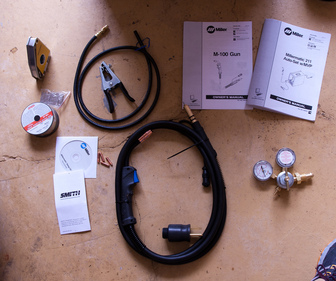Gas Metal Arc Welding (GMAW) Advantages/Limitations

There are many Advantages in using the GMAW welding process. This is because of the ease of use when compared to SMAW and the process capabilities.
Like with anything there are limitations to a welding process.
- The GMAW process is a Low-Hydrogen process that makes it good for welding on materials that are susceptible to hydrogen cracking.
- There is very little slag produce so it's post weld cleaning is minimal.
- Being that the electrode is a continuous wire it allows for long welds without the need to stop.
- GMAW can have high travel speeds and deposition rates if it is compared to Shielded Metal Arc Welding (Stick/SMAW), which can save money on down time.
- This process can be used in every position which is an advantage over the SAW welding process.
- It can be Automated for high production with repeatable parts.
- It is an process that is sometimes considered to be easier to learn than other processes.
- The Process is Capable of welding Dissimilar metals.
Like with anything there are limitations to a welding process.
- The welding machine itself is more complex then the SMAW power supplies, which leads to an increase in equipment costs.
- Due to the size of the GMAW Gun it makes it hard to reach into smaller areas.
- Also there is a lot of heat that is radiated off the process that can cause discomfort.
- The Shielding Gas can be blown away from the weld pool causing many issues.
- the whip should not be coiled while welding is being performed, because of possible undesirable feeding issues.
